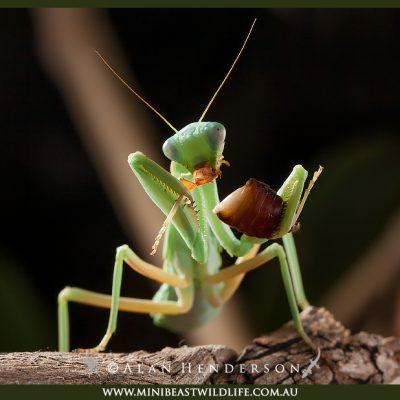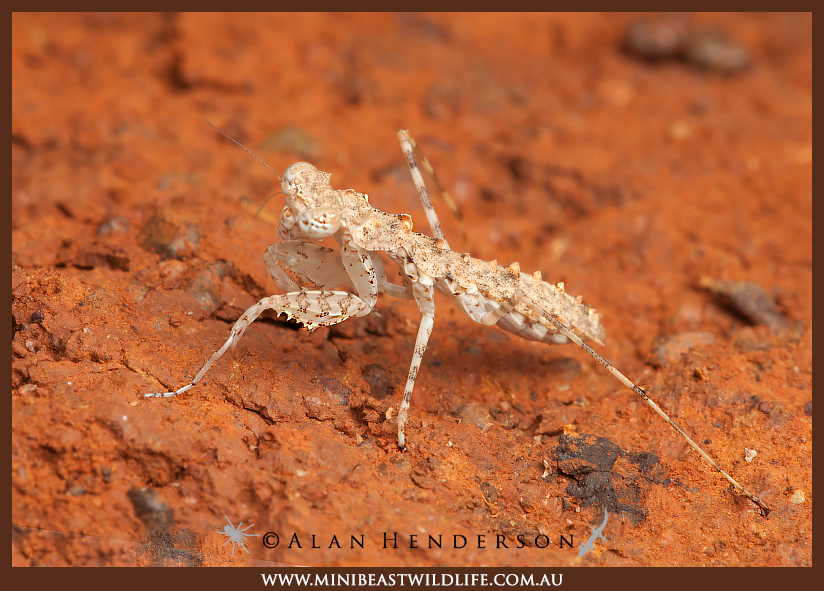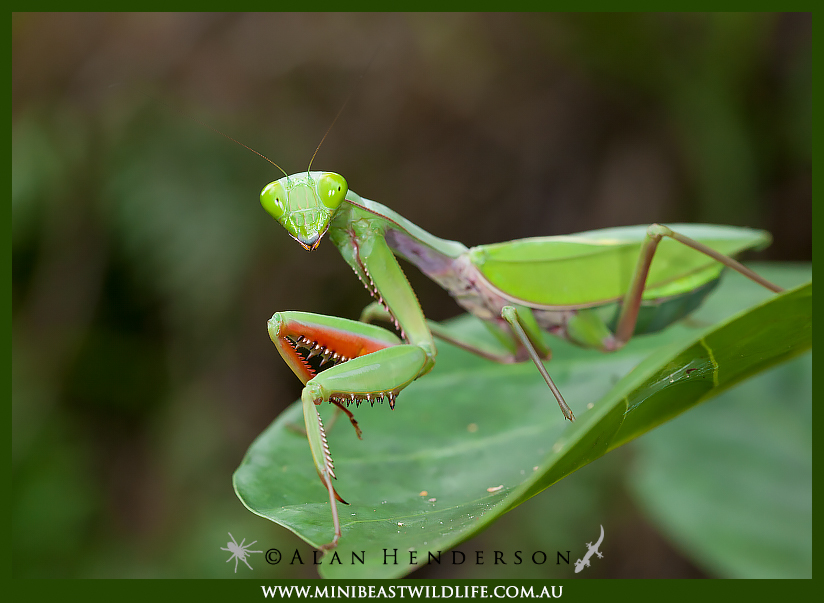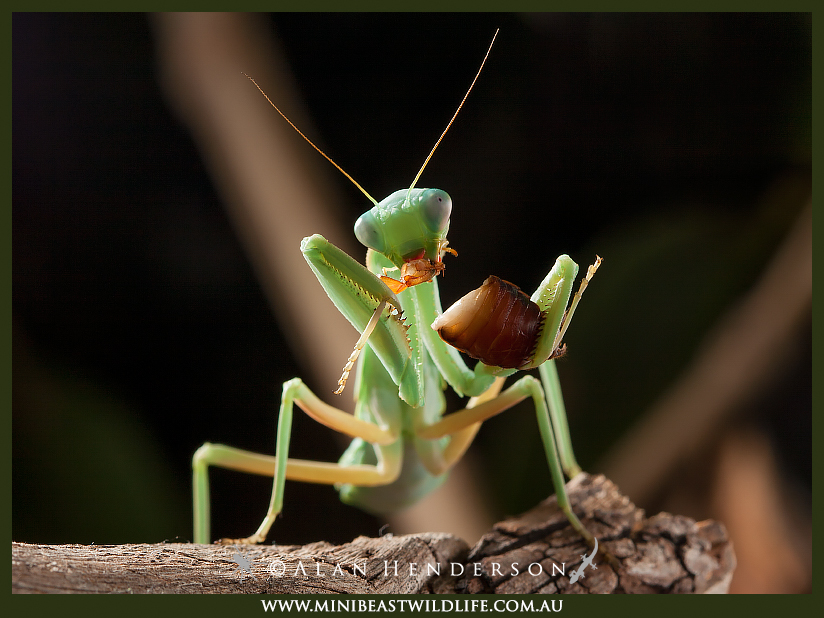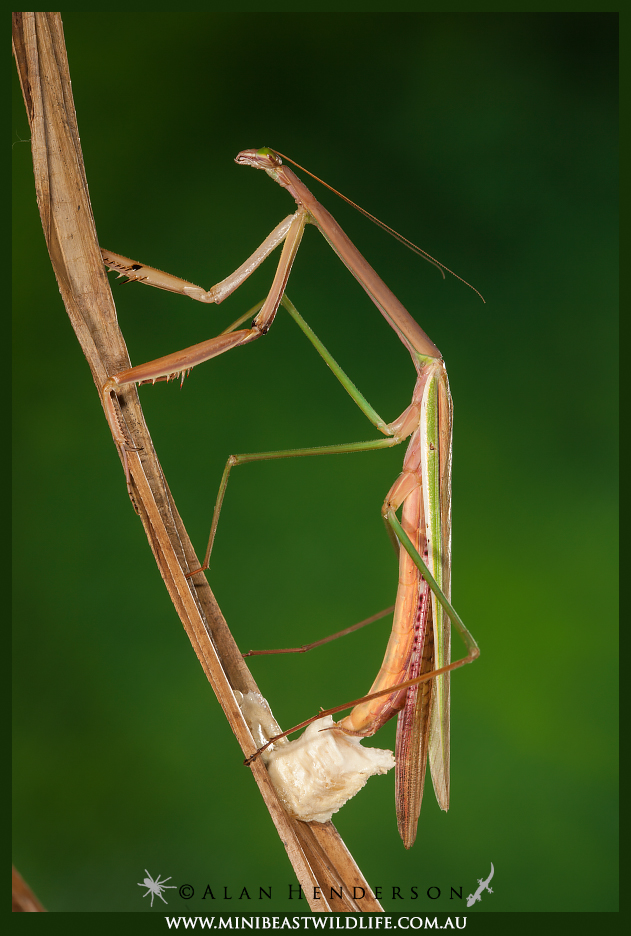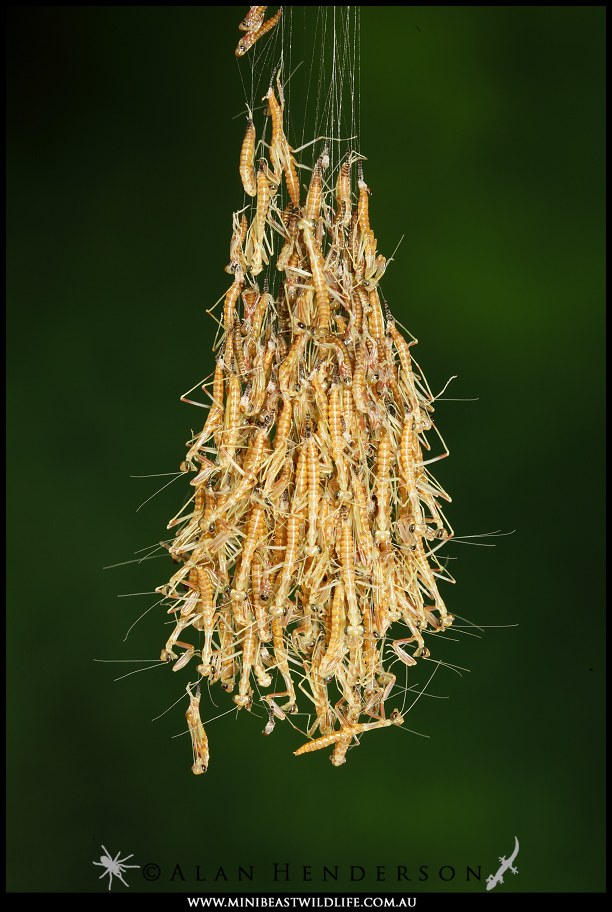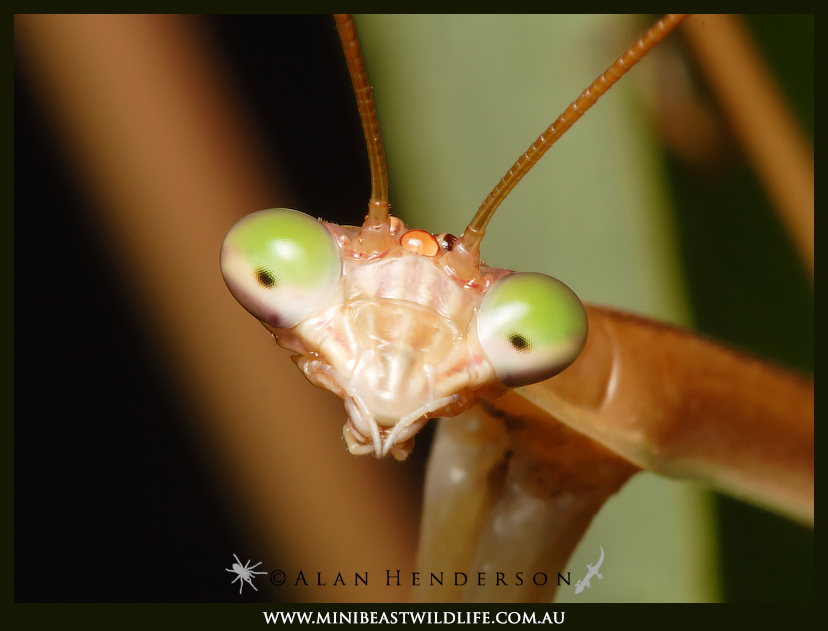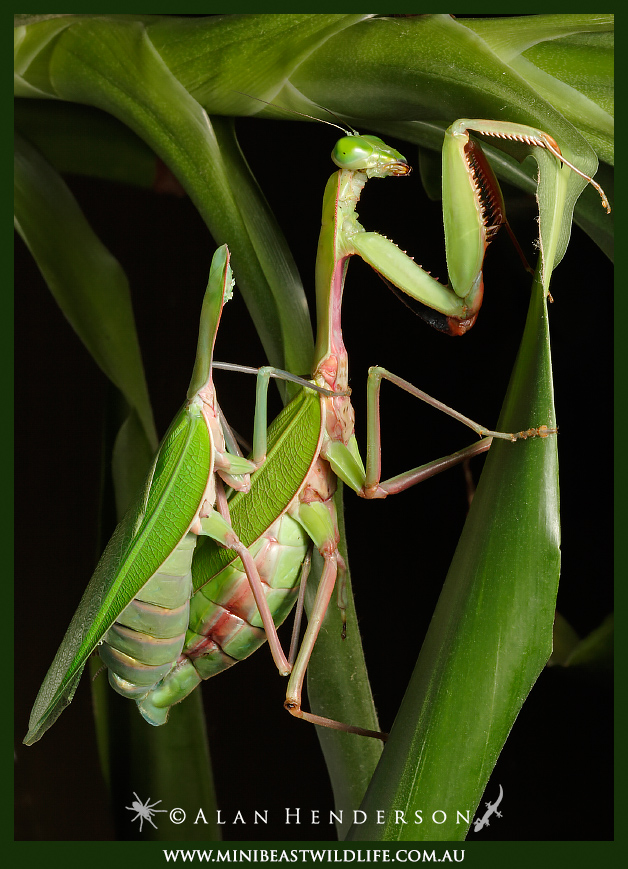AUSTRALIAN INVERTEBRATES
Praying Mantises
Australia has just over 100 described species of praying mantises. They are found in a wide range of habitats from the dry deserts to the lush rainforests. Size varies enormously from minute species living upon termite mounds to giants in the tropical northern forests.
